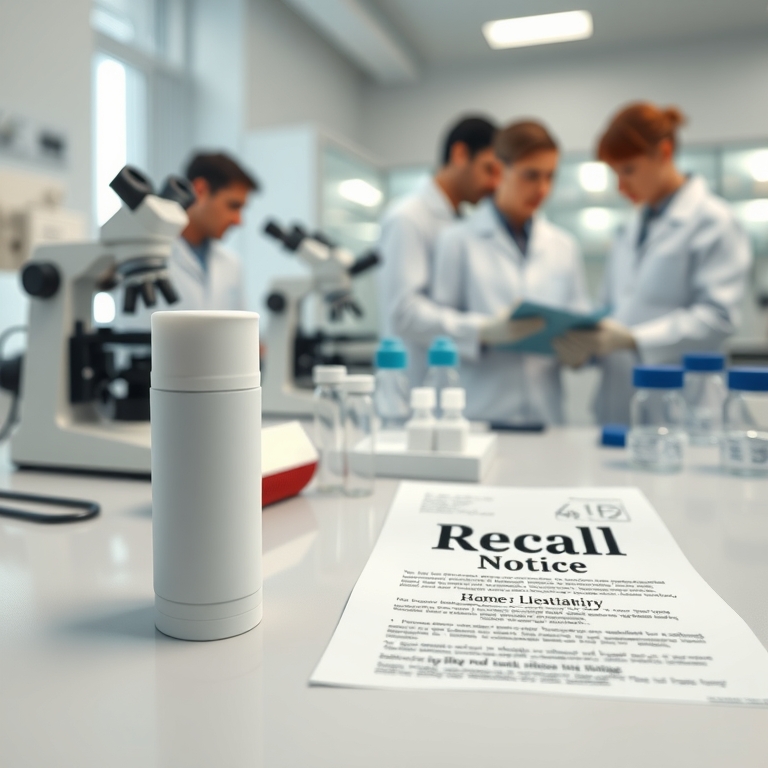In a surprising turn of events that has sent ripples through both the consumer goods industry and households nationwide, the U.S. Food and Drug Administration (FDA) has announced a major recall of a widely-used deodorant. This recall comes in response to the detection of harmful contaminants in several batches of the product, sparking concerns over consumer safety and prompting an urgent response from both the manufacturer and regulatory bodies. The deodorant, which has long been a staple in personal care routines for millions, is now at the center of a controversy that has raised questions about product safety standards and the vigilance of quality control mechanisms.
The deodorant in question is manufactured by a well-established company known for its extensive range of personal care products. Over the years, the brand has garnered a loyal consumer base, thanks to its reputation for reliability and effectiveness. However, the recent findings have cast a shadow over its image, prompting a swift and comprehensive recall. According to the FDA, routine testing revealed the presence of potentially hazardous contaminants in the product, which include a class of compounds known for their adverse health effects when exposure occurs over a prolonged period. The specific nature of these contaminants has not been publicly disclosed in detail, but the FDA’s swift action underscores the seriousness of the situation.
For consumers, the recall has ignited a sense of urgency and concern. Many are left wondering about the potential health risks they may have inadvertently exposed themselves to. The FDA has advised those who have purchased the affected batches to discontinue use immediately and to follow instructions for returning or disposing of the product safely. This recall serves as a stark reminder of the importance of regulatory oversight in the consumer goods market, as well as the need for companies to maintain rigorous quality assurance protocols.
The manufacturer, in response to the FDA’s findings, has issued a public statement expressing its commitment to consumer safety and its intention to cooperate fully with the recall process. The company has emphasized that it is working closely with the FDA to identify the source of the contamination and to ensure that corrective measures are implemented swiftly. It has also reassured customers that it is conducting an internal investigation to prevent future occurrences and that they are exploring means to enhance their quality control processes.
This incident raises significant questions regarding the current state of quality assurance practices within the industry. The detection of harmful contaminants in a product that is routinely applied to the skin highlights potential vulnerabilities in the supply chain and manufacturing processes. It also brings to the forefront the challenges faced by companies in ensuring that their products meet safety standards consistently. The recall is likely to prompt other manufacturers to reevaluate their own quality control measures to avoid similar pitfalls, as consumer trust is paramount in the personal care industry.
From a business perspective, the recall represents a multifaceted challenge. There are immediate financial implications, including the costs associated with the recall itself, potential legal liabilities, and the loss of consumer trust and brand reputation. In the long term, the company must navigate the path to restoring its brand image and regaining consumer confidence. This might involve not only rectifying the current issue but also implementing more stringent safety protocols and communication strategies to reassure the public of their commitment to quality and safety.
For stakeholders and industry analysts, this development serves as a case study in crisis management and the importance of maintaining rigorous safety standards. It underscores the critical role that regulatory bodies like the FDA play in safeguarding public health and ensuring that products in the market adhere to stringent safety criteria. The recall also highlights the interconnected nature of global supply chains, where a single flaw can have far-reaching consequences.
As the situation unfolds, both the company and the industry at large will be under scrutiny. The deodorant recall is poised to become a pivotal moment, prompting discussions on regulatory policies, consumer safety, and corporate responsibility. For consumers, it is a wake-up call to remain informed and vigilant about the products they use daily. For the business community, it is a reminder of the intrinsic value of trust and the responsibility that comes with producing goods that people rely on.
Moving forward, it will be crucial for the manufacturer to communicate transparently with the public, offering regular updates on the recall process and the steps being taken to address the underlying issues. Rebuilding trust will require a concerted effort, involving not only rectifying the immediate problem but also demonstrating a long-term commitment to safety and quality. This situation also presents an opportunity for the company to lead by example, setting new standards for industry best practices and showcasing their dedication to consumer well-being.
In conclusion, the FDA’s recall of this popular deodorant serves as a critical reminder of the ever-present need for vigilance in product safety and quality assurance. It highlights the complexities and responsibilities inherent in manufacturing consumer goods, particularly those applied directly to the body. As the industry navigates this challenging terrain, the lessons learned will undoubtedly shape the future of product safety standards and regulatory practices, ultimately fostering a safer and more transparent market for consumers.

Leave a Reply